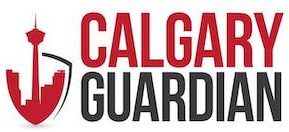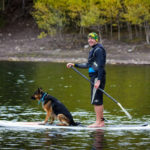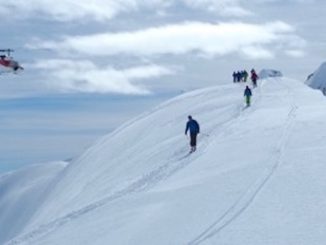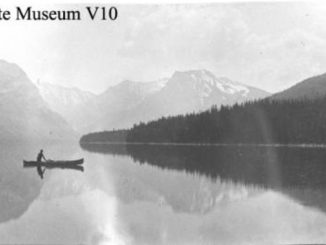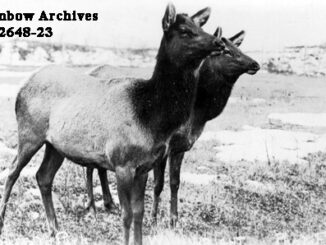“A new world was spread at our feet: to the westward stretched a vast ice-field probably never before seen by the human eye, and surrounded by entirely unknown, unnamed and unclimbed peaks.”
~J. Norman Collie – Credited as the first European, along with Hermann Woolley, to discover the Columbia Icefield from the summit of Mount Athabasca in 1898.
Nestled in the heart of Canada’s Rocky Mountains, the Columbia Icefield covers an area of approximately 200 square kilometres. It straddles the Continental Divide between Alberta and British Columbia with portions residing in both Banff and Jasper National Parks. It ranges from 100 to 365 metres deep, receives seven metres of annual snowfall, and feeds eight prominent glaciers, including the Saskatchewan, Dome, and Athabasca. Due to its proximity to the breathtakingly scenic Icefields Parkway, the Athabasca Glacier holds the distinction of being the most visited glacier in North America.
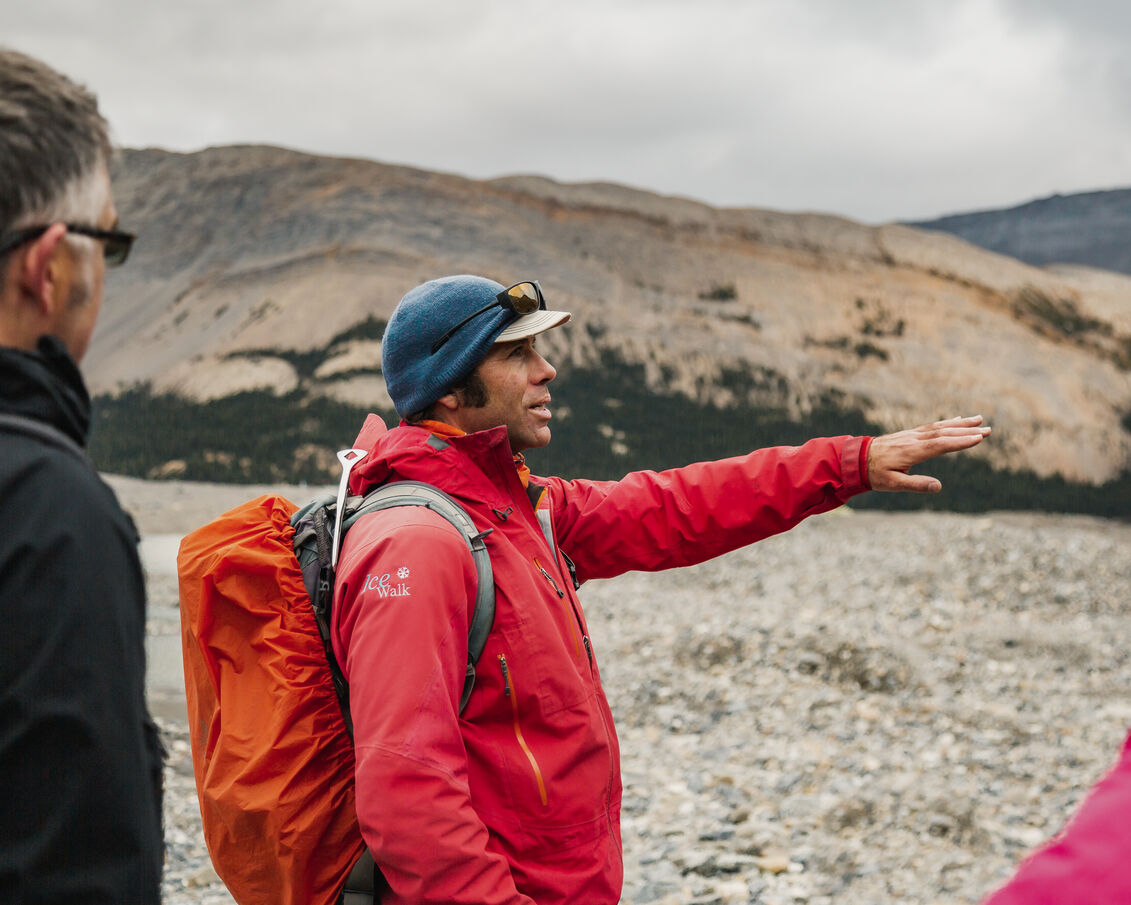
After Collie and Woolley’s discovery of the Columbia Icefield, early explorers and mountaineers were drawn to the area. Tourism, however, didn’t really get started until the early 20th century, which only intensified with the completion of the Icefields Parkway in 1940. It was this development of road infrastructure and eventually guided tours that transformed the glacier into a mainstream attraction.
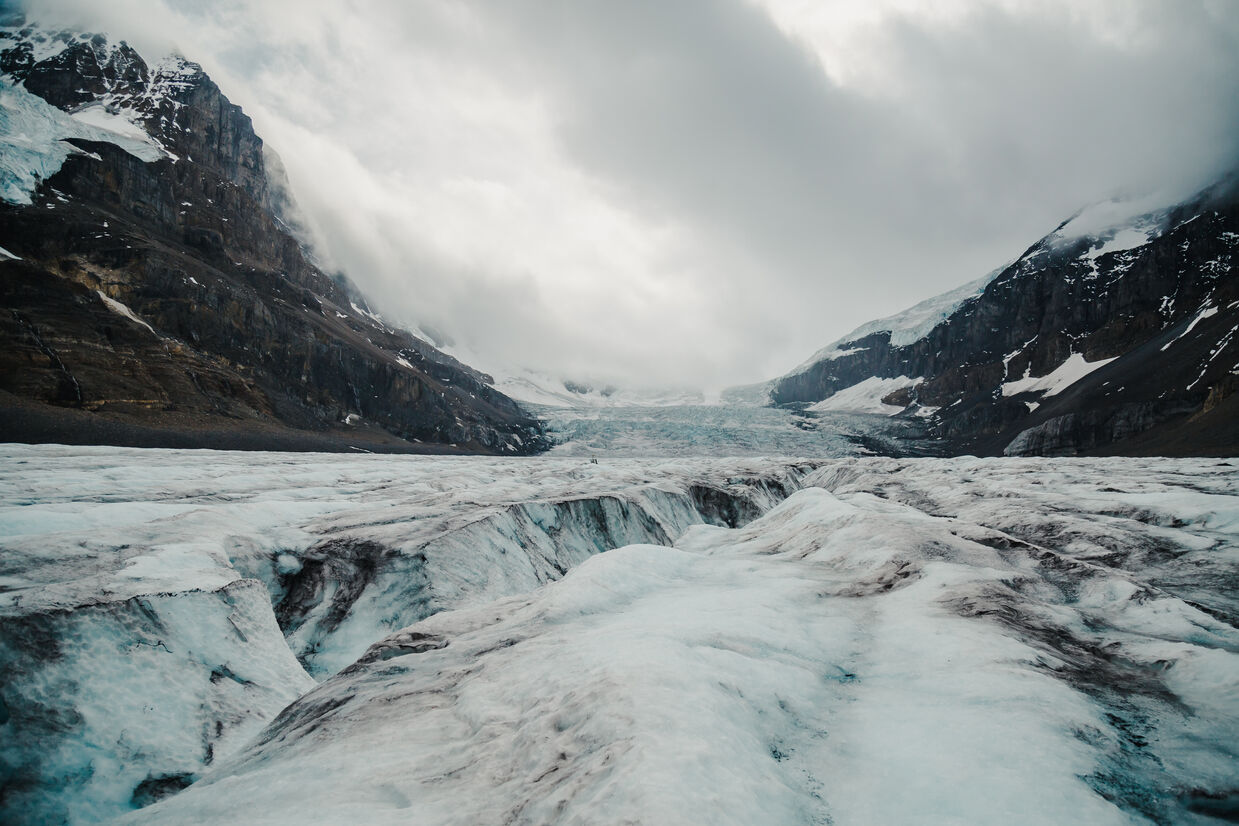
One of today’s top glacier guiding companies had a very informal start. Peter Lemieux used to run free interpretive programs for guests on behalf of Parks Canada. This was before cell phones, so it was a guessing game each day for Lemieux. Guests would register for a guided glacier tour at the Jasper Adventure Centre but there was no way of communicating those numbers with Lemieux, so when the daily mid-morning tours started, it was always a surprise as to how many people would be there. Budget cuts eliminated this program but Parks offered Lemieux an opportunity to continue running the tours as a private enterprise. Athabasca Glacier IceWalks was officially born in 1985 with Lemieux at the helm until 2020. Over 35 years, Lemieux built IceWalks into the incredible guiding company it is today. With Lemieux stepping back in 2020, ownership was transferred to longtime IceWalks guide Corin Lohmann.
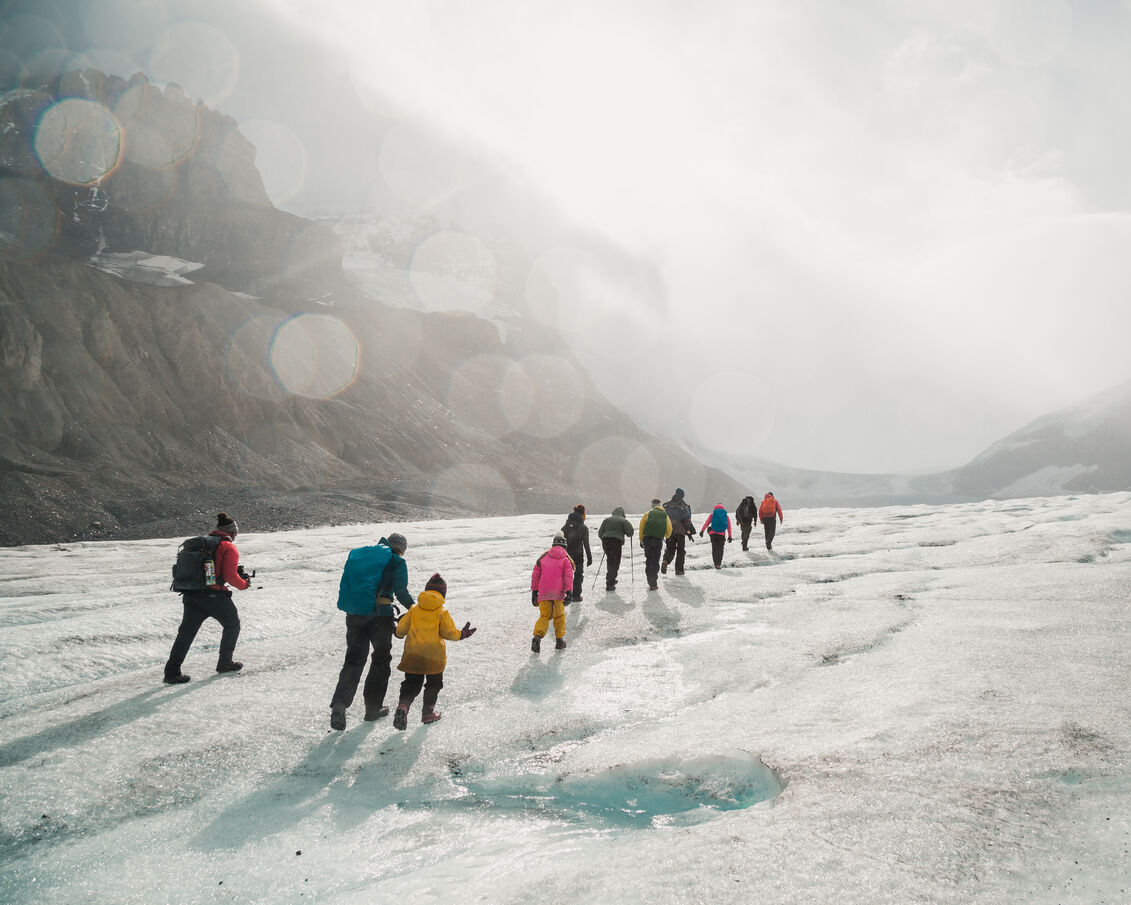
With the United Nations declaring 2025 as the International Year of Glaciers’ Preservation, I wanted to feature someone in this column who works on glaciers and has developed an appreciation for the rapid changes that are occurring in the Canadian Rockies. Recently I shared a conversation with Lohmann about his career path, the ins and outs of guiding on the Athabasca Glacier, and some of the drastic changes he’s witnessed firsthand.
How long have you been guiding with IceWalks?
I started with IceWalks as a guide in 2013 and took over as majority owner in 2020.
What made you want to take over IceWalks from Peter Lemieux?
I was ready to take on the challenge of business ownership, and Peter was a great mentor and was willing to guide me through the transition. It was also a fun job and I could see it was a profitable company with low overhead costs. It was a no-brainer for me. But beyond the economics of it, the company has always prided itself on customer service. It’s so much more than simply touching the glacier ice. It is an in-depth, visceral experience, like walking through a glaciology textbook. You get to see and learn about all the features, like the moraines, the glacial till, the runoff, and then once you’re on the glacier you’re learning about the ice, the pressure cracks, different formations, crevasses, and millwells. Basically, our goal is to connect people with glaciers and the effects of climate change and our hope is that people are motivated enough to make changes in their lives, or at the very least carry forward the story of the glacier and their experience with it.

What type of certification/training is required to be a glacier guide?
In order to guide in the national parks, we need to be certified through the Association of Canadian Mountain Guides (ACMG). At a minimum, we are all apprentice ski guides, but we also have some alpine guides and mountain guides on the team. Completing the various courses means that our guides are qualified in glacier travel, crevasse rescue, the effects of changing weather conditions, and all other aspects of mountain and glacier travel. In addition to our ACMG certifications, our guides are also accredited interpreters through the Interpretive Guides Association (IGA), meaning they have the ability to explain the formation of this dynamic environment.
Let’s take a virtual look inside your pack. What do you always have with you while guiding?
We always carry rescue gear. Things like a rope, carabiners, ice screws, and prusik cords are essential in an emergency situation. We also have a cache of ropes and additional gear that can be brought down onto the glacier very quickly if we need to do a more involved rope rescue. In addition to rescue equipment, we also carry first aid supplies, extra clothing and rain gear due to rapidly changing mountain weather, a flashlight, a lighter, and usually a tarp.

What’s the best thing about your job?
You know, some of the best moments with this job are the crazy things that can happen when you pick up the phone. It’s just unbelievable how people can find us and how interesting those people are. It’s one of the joys of working with this company, it’s just such a cool thing. What gives the job meaning is being able to share this landscape with people and indulge in their reactions and their enthusiasm, it’s infectious!
What’s one of the most challenging aspects of your career?
Those same people I just mentioned can also be our biggest challenge. As a guide over time you develop strategies to deal with most weather situations. The people we take out also have to deal with that same weather but they might not have the same tools. Ensuring that your group can make it through the trip comfortably and still be able to appreciate the experience is key. Group dynamics are challenging and always changing. For example, you could take out a group of 12 and 10 of them could really enjoy themselves, but if you don’t account for the two who are struggling they will end up with a negative experience. Ensuring everyone leaves feeling positive about the experience is always our biggest challenge.
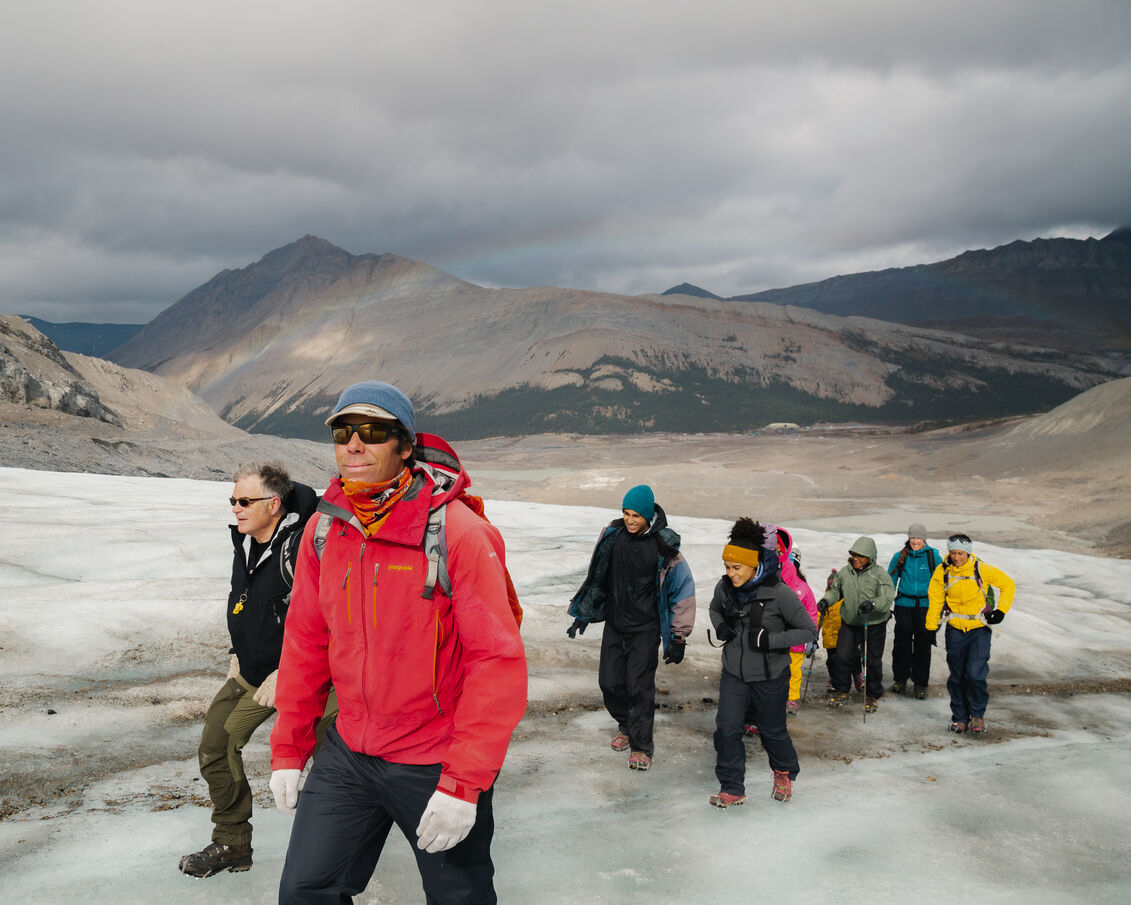
We know the glaciers in the Rockies are rapidly receding. What changes have you noticed in your time as a guide?
Well, it is definitely getting smaller. We’re there most days throughout the summer and we tend to notice small-scale differences, but the heat dome in 2021 caused some profound changes. We were seeing unbelievably high temperatures while on the glacier. It also occurred around the Solstice, so the sun was at its highest point in the sky. We hadn’t ever seen that much melting off of alpine glaciers, like Snow Dome and Andromeda, before. After that summer the glacier looked different. I remember when I started in 2013. You’d take a group up onto the glacier and you’d have to walk to get to the middle section. There was this glacier ablation pole that was about 3-4 metres in the air and you’d know that you were at the midpoint when you reached that pole. Back then walking to the midpoint was a large part of the tour before trending uphill to see the crevasses, and now it takes significantly less time to get to that same point. Each year you’ll lose up to five metres of ice. We tell our guests that by the end of summer if we were to come back to this exact spot on the ice we’d be five metres lower in elevation. I have seen the biggest changes occur at the toe section of the glacier though. When I first started guiding there was just a stream of meltwater coming off the glacier and now it’s a lake. Just in my time, I’ve probably seen half a kilometre of glacial recession.
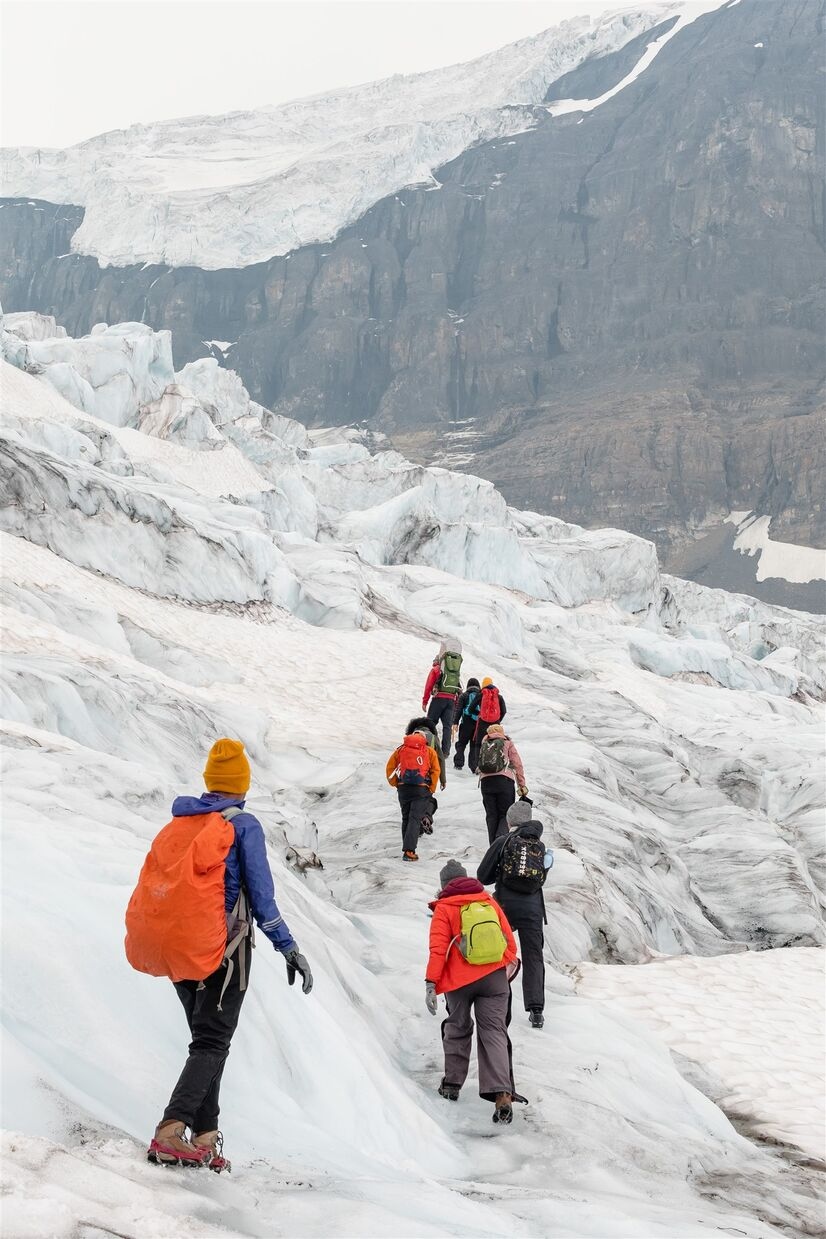
I would like to extend a profound thank you to Corin for his time and candidness during this interview. Our conversation happened as Lohmann was gearing up for another busy guiding season, so I know how valuable time can be. This year will be extra special, as 2025 is the 40th anniversary of Athabasca Glacier IceWalks. Reservations are open and spots are already filling up, so if you’d like to see the Athabasca Glacier up close and learn from experienced guides, take this opportunity to book your spot today. Thanks to folks like Lemieux and Lohmann, the raw, rugged beauty of glacial landscapes are no longer just the realm of mountaineers. Almost anyone can experience the magic of setting foot on ancient ice.
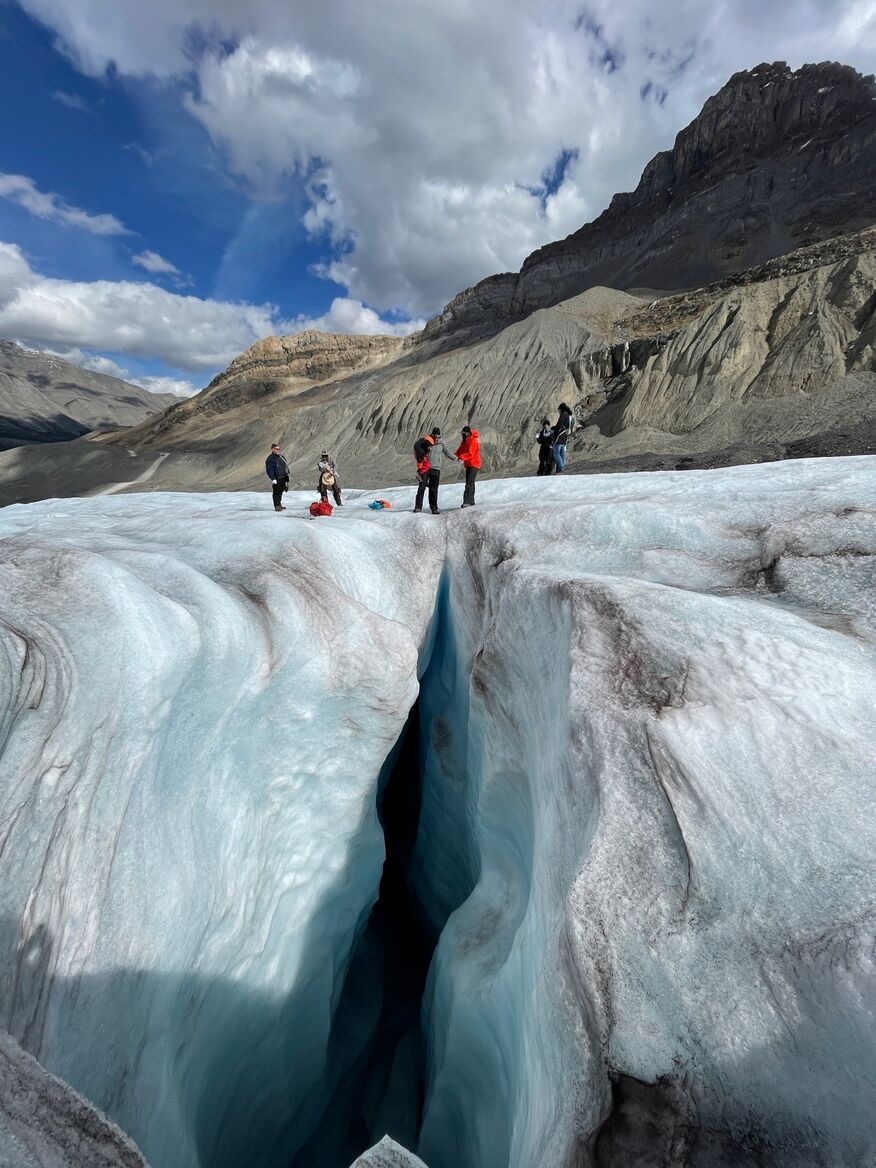
All pertinent information can be found on the IceWalks website. You can also stay connected with them on Instagram, Facebook, and YouTube.
For even more glacier and mountain related stories please see Historic Photos of Glaciers from the Canadian Rockies, Vintage Photos of Mountain Climbing from Alberta, Wild Jobs: Heli-Ski Guide, and Wild Jobs: Mountaineering Guide.
***
About this column:
Wild Jobs is a running series that focuses on people in outdoor-related professions. It provides a brief snapshot of their career and the duties that it entails. Please see my previous post, Wild Jobs: Bicycle Service Manager to learn more.
